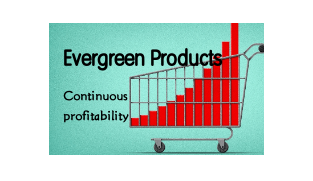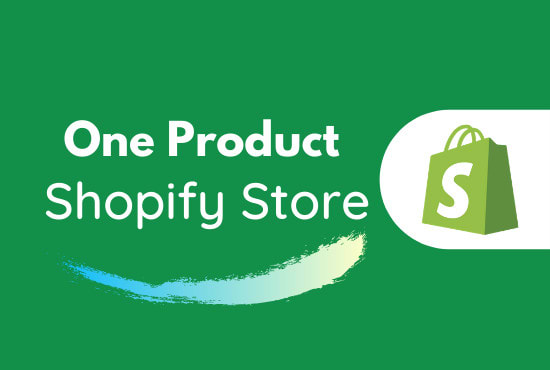The Ultimate Guide to Dropshipping

Have you ever wanted to sell products online but felt limited because you don’t make any products yourself?
If that’s the case, then dropshipping might be just what you’re looking for.
In this guide, we’re going to explain exactly how dropshipping works, the pros and cons, and how to start your own dropshipping business.
Ready? Let’s get started.
What is dropshipping / How does dropshipping work?

Dropshipping is a way of selling things on the internet where you function as the middleman. In other words, you market and sell someone else’s products, and when an order is placed, you purchase the item from the seller and then have it sent to the buyer.
You don’t actually hold any of the products as inventory. Rather, you function as more of a storefront, showing off products that someone else manufactures.
How do you make money with dropshipping? Typically, it’s by selling the products at a markup from what you have to pay to buy them from the seller.
The big advantage of dropshipping is that you don’t have to create your own product, which can be really expensive and time consuming. The bar to ecommerce is lowered significantly with dropshipping, and with the right tools, you can start a dropshipping business in just a few hours.
What’s more, you don’t have to continually stay on top of your inventory since you don’t actually carry any of the products in stock. You don’t have to pay for a warehouse to store your products and you can run your store from anywhere as long as you have an internet connection.
How much does it cost to start a dropshipping business?
While it doesn’t cost a ton of money to start a dropshipping business, there are a few expenses you’ll need to budget for.
First, you’ll need a website and domain name for your store. If you use a platform like Shopify.com, you’ll pay around $30/month for the platform and between $5 - $20 per year for your domain name, depending on where you purchase it from.
You will also need a budget to buy products for your initial testing before you sell them. If you don’t test the products, you could end up with lots of defects, leading to a high return rate and unhappy customers. Save yourself the headache by testing everything you want to sell. The amount you’ll need for testing will obviously depend on how many products you sell and how expensive they are.
You should also budget money for advertising. In the beginning, at least, this will be one of the primary ways that you attract new customers. Over time, as your customer base grows, you may not need to spend as much on advertising, but in the beginning, you’re probably going to need it.
How much should you set aside for advertising? While there are no hard and fast rules, you should probably budget between $500 - $1,000. This will give you enough to start building your customer base.
You need to take all these expenses into account when considering how much to mark up your products. If you don’t give yourself enough margin, you won’t make enough profit to cover your expenses.
Downsides of dropshipping

There are some downsides to dropshipping that you should be aware of before you dive in.
First, because it’s so easy to get into dropshipping, there can be a lot of competition. The more competitive your niche, the slimmer your margins will be since you’ll have to compete primarily on price.
There can also be challenges with getting items shipped to customers since you’ll probably be working with multiple manufacturers. For example, say a customer purchases two items from your store and each is sold by a different manufacturer. You’ll end up having to pay two shipping charges. You may be able to pass these on to the customer, but figuring out these calculations on the fly can get complicated.
Third, you’re bound to run into problems with manufacturers. Even the best ones will make mistakes occasionally, and you will have to take responsibility for these mistakes when talking to your customers. And if one of your suppliers is low quality, you’ll have to deal with this even more frequently.
Finally, you’re pretty limited when it comes to customizing products. In most cases, the manufacturer does all the design, branding and packaging. If you’re intent on selling products with your brand on them, dropshipping probably isn’t the best solution.
How to start a dropshipping business
Now that you have a solid grasp on how dropshipping works, let’s talk specifically about how to start your own dropshipping business.
One important note: to succeed with dropshipping, you have to commit to putting in time and effort. If you’re looking for overnight success or an easy way to make lots of money, look somewhere else, like the lottery.
Like every other business, you’ll have to learn as you go. You’ll have to learn how to:
- Market your products
- Serve your customers
- Deal any issues that arise
- Increase profits
- Decrease costs
- Maintain good relationships with manufacturers
- And more
Simply put, you’re not going to be an expert when you first begin. But over time, you’ll gain more experience and learn what does and doesn’t work.
The point is, despite what some “gurus” may say, dropshipping isn’t a get-rich-quick endeavor. That being said, if you’re willing to do the work, it can be an effective business model that allows you to generate significant profits.
Now let’s talk about the steps you need to take to build your business.
Step #1: Choose your niche
Unlike Wal-Mart, you shouldn’t try to sell anything and everything. Rather, you want to try to find a niche that is profitable and has room for growth. It’s better to start narrow and expand into more areas than to start too broadly and not really appeal to anyone at all.
What’s more, smaller, niche groups tend to be passionate about their hobbies and interests. Think about how excited people get about fitness, coffee, fishing, baking, gaming, and a thousand other things. If you can connect with a niche audience, it’s easier to get traction.
So, how can you find profitable niches and products? There are several tools that can be really helpful.
First, Shopify maintains a list of trending products that they think have the potential to be hot. You can use this list for inspiration and ideas.
Google Trends and Exploding Topics are also helpful because they allow you to see what people are searching for and whether it’s trending up or down. For example, with Exploding Topics, you can see what is trending in the beauty category:

Based on what’s trending, you can make decisions about what products to sell in your store.
Step #2: Evaluate product demand
Before you launch your store, you need to see what demand is like for various products. You don’t want to build your dropshipping store around products that people don’t really want.
So how can you know what products will actually sell?
The simplest way is to create a shop directly on your Facebook or Instagram page and then create ads for different products. You don’t have to spend a ton of money on the ads -- just enough to see whether people seem interested in a product.
How can you tell whether people are interested? The primary way is whether you actually make any sales. If a particular product doesn’t generate any (or many) sales, it indicates that there’s probably not a huge demand for it.
On the other hand, if an ad for a product generates a decent amount of sales, that’s a sign that there is demand for it and that it could be a good product to dropship.
Step #3: Research the competition
Next, you need to determine who your competitors are. If you want to differentiate yourself from the competition, you need to have a good idea of who you’re up against and what strategies they’re using to sell their products.
There are some relatively easy ways to research your competitors. Start with a Google search of the product(s) you’re going to be selling. The top results will give you a good feel for who the big players are in your space.
From there, you can use tools like SimilarWeb or Alexa to get detailed information about your competitors, like their social media profiles, how much traffic they get and where it comes from, and even who their competitors are.
You can also use the Facebook ad library to see exactly what ads they’re running on Facebook. This can give you a good sense of the messaging they’re using, who they’re targeting, etc.
Try to get as much info as possible on the competition, and then look for ways you can differentiate yourself.
Step #4: Choose your ecommerce platform
You’re going to need a solid ecommerce platform from which to sell your products. If you want, you can create a basic website yourself and manually list all the products you sell, but this requires significant amounts of effort.
A much easier solution is to use a platform specifically designed for dropshipping and ecommerce. These platforms include:
These platforms allow you to quickly and easily build a website and then import products from suppliers into it.
The reason you should choose your platform before you choose your suppliers is that different platforms integrate with different marketplaces. You want to make sure that the platform you choose integrates nicely with the supplier marketplace you choose.
Take some time to explore the different platforms to find the one that best fits your goals and budget.
Step #5: Choose your suppliers

Now it’s time to choose who is going to actually supply the products you’ll be dropshipping. This is, obviously, a very important step and you need to do your due diligence to ensure that you find good suppliers.
The marketplace you choose should easily integrate with your platform so that you can seamlessly import products and pass on orders to suppliers.
There are a number of free and paid marketplaces where you can find suppliers, including:
When choosing your suppliers, pay attention to some key things:
- Product price
- Product rating
- Supplier rating (if available)
- Shipping options
The shipping options are especially important if the product is shipping from somewhere far away. For example, if your customers are in the U.S. and the product is shipping from China, you don’t want your customers having to wait months for their product to arrive.
Don’t forget to test products before you choose a supplier!
Step #6: Create your store
You’re almost ready to start selling. You just need to get your ecommerce store set up. If you’ve chosen a platform like Shopify, you should be able to get up and running in just a few hours.
You simply select your theme, customize it to fit your business, and begin importing products. Shopify even has tools to help you create a business name and logo, as well as find the right domain name for your store.
Once you have your store set up, do a few test orders to make sure everything is functioning properly. You want to make sure everything is smooth before you take your store live.
Step #7: Start selling!
You’re finally ready to start selling your products! Get out there and start promoting. Tell your friends, your mom, your friends moms, and everyone else about your new store. Spread the word on social media and get some ads for your products running.
Remember, it will probably take some time for you to get traction. Stick with it. If the sales aren’t pouring in immediately, don’t get discouraged. Stay focused and keep moving forward.
Start your store today
Truth be told, it’s never been easier to sell products online. In years past, you had to spend large sums of money to develop products and build a website on which to sell those products. With dropshipping, you can sell someone else’s products and build an ecommerce website in just a few hours.
So what are you waiting for? Find your niche, find your products, and start building your own dropshipping business today.






